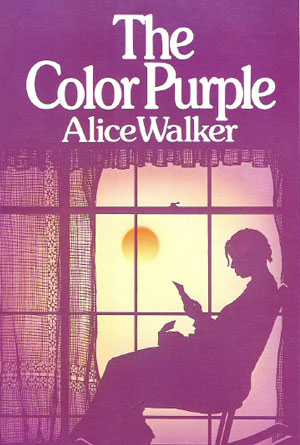Age-Old Themes from ‘The Color Purple’ Still Ring True

January 24, 2017
When The Color Purple by Alice Walker was first published in 1982, it took the literary world by storm by winning both the Pulitzer Prize for Fiction and the National Book Award for Fiction, a feat that only a few books can boast about.
35 years later, its powerful message about African American women and the effects of slavery, European colonization, and the spread of Christianity still makes it a bestseller. Ranked #17 on the Top 100 Banned/Challenged Books of 2000-2009, the novel grapples with many controversial and graphic subjects such as sexual abuse, but its positive message and soaring characters make it a read that is so much more meaningful than its subject matter.
The entire book is epistolary, or written in the form of letters. Celie, who is the main voice of the novel, writes to God, largely because she feels He is the only one who will listen (however, her ideas of religion change drastically in the novel). Celie was raped at a young age, married off shortly after, and taken out of school when she was pregnant. Her letters reflect her state, as the dialect is written with little attention to grammar and spelling, and although that could be distracting, it actually made it easier to fall into the plot.
More than anything, this is a book about women. The entire cast is stunning: Celie, who is discovering how to become herself after having her identity thrown around by other men in her life, Nettie, her intelligent, educated sister working as a missionary in Africa, Shug, Celie’s love interest, who is vibrant and glamorous yet fiercely loyal, Sofia, the fiery and determined daughter-in-law of Celie, Squeak, a quiet beauty who discovers her talent for singing…each woman is so strong within herself but at the same time, all of them come together to form a multi-faceted persona of African American women, and women, everywhere.
For dealing with such difficult, dark subject matter, the book shares a largely positive message. The title in itself is a reference to the rare beauty of the world that Celie is trying to discover, the positive moments in a lifetime of being pushed down. It deals with many issues and tries to swallow them completely, but often doesn’t necessarily go into depth of all those topics. But perhaps that’s purposeful, as even the women and the characters cannot swallow these issues that engulf them.
Overall, The Color Purple made the topics of sexuality, religion, gender, and race approachable through fully realized characters and an unique story format. An instant classic when it was published, its universal message and powerful mastery of language have established it as one of the most noted literary works of the 20th century.
The Color Purple is February’s book for FemLIT, Westwood’s feminist literature club. The next meeting will be held on February 6th in the library after school.


